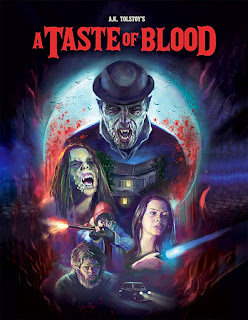A Taste of Blood
Based on the same story Mario Bava used for his verdalak segment in Black Sunday (or Black Sabbath in its home country of Italy…see what I mean!), this expansion of the Russian myth about a blood-sucking creature that feeds only on its family members offers an original twist on the vampire legend. In director Santiago Fernandez Calvete’s film, a family has self-isolated for years because of their father’s fear of the clever creatures. But his efforts prove useless when a verdalak attacks his daughter, pitting the family against each other as each suspects the other of becoming a monster.
Although set in modern Argentina, A Taste of Blood plays like a period film. And that’s a good thing. Calvete’s style is polished but still leans toward classic horror imagery, effectively utilizing practical make-up effects and the power of suggestion over cheap jump scares. And he’s supported by a cast that seems lifted from a lost Hammer film, particularly German Palacios who bears a striking resemblance to Karloff under the heavy beard and haggard appearance. There was plenty more suspense to be squeezed out of the third act twist, but A Taste of Blood stakes its own claim in a genre cluttered with copycats.
But on to the elephant in the room. MVD’s Blu-ray includes two versions of the film: an English dubbed presentation and another with the original Spanish tracks. The first version inexplicably only dubs two or three main characters and supplements the soundtrack with a mix of post-punk, dark wave songs that cut in on selected scenes (think Demons but slightly more subtle). It’s an odd creative choice but one that explain why the set also includes a soundtrack CD featuring artists like Rosetta Stone and Christian Death. Meanwhile, the Spanish language version offers no subtitles at all and leaves the orchestral score intact. It’s a compromise either way, but at the very least you can console yourself with a horror-themed soundtrack that as good as anything your listened to in 1985!




Comments
Post a Comment